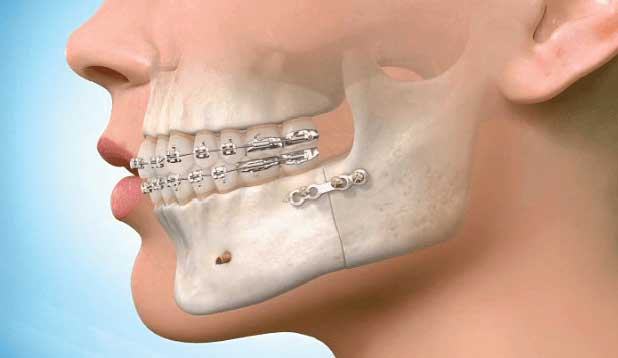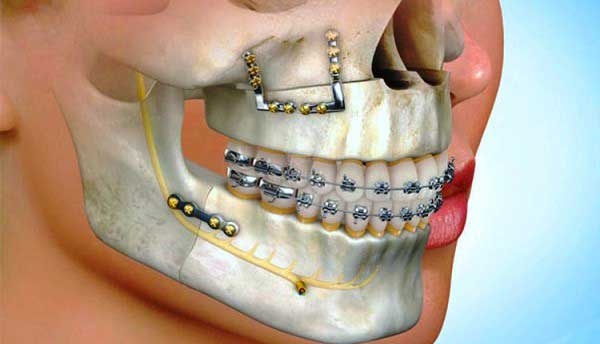
What is Surgical Orthodontics?
Also called orthognathic surgery, surgical orthodontics involves repositioning the jaw to correct jaw irregularities that impede a patient’s bite. These discrepancies in a person’s bite can not only affect their smile, but also how they chew, speak and breathe.
The reason why we see so many children and adolescents in braces is because an orthodontist can achieve the most ideal results while the jaw is still growing. Jaw growth is usually completed by about age 16 in girls and 18 in boys. After this, orthodontics is still possible, but if the top or bottom jaws grew abnormally, there may be a need for surgery to correct it in order to create the most ideally functioning bite.
What Does Surgical Orthodontics Entail?

After the braces have effectively moved the teeth, it will be time for surgery. The surgeon will work to properly position your jaw. In lower jaw surgery, the surgeon will separate the jawbone behind the teeth in order to move the jaw forward or backward, as needed.
The upper jaw can also be repositioned either forward or backward as needed, but it can also be raised or lowered to create the perfect harmony in your bite. Your surgeon may also need to reposition or augment other facial bones that assist in alignment. The goal is to create the perfect alignment and stability.
The Post-Surgery Process
It will take about four to eight weeks for the jaw to heal properly. You can return to work or school after two weeks. Once your jaw has healed, your orthodontist will fine tune your bite with braces again. This should only last a few months, and then you’ll be ready to show your new and improved smile off to everyone!
If you are an adult who would love to learn more about how orthodontics can help you, Cucalon Orthodontics proudly serves patients of all ages and provides the highest level of orthodontic care available. Call Cucalon Orthodontics today.